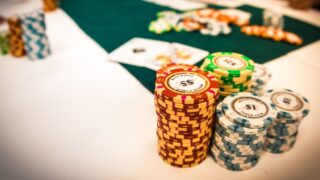 Probability
Probability Preflop Strategy and Playing Style
We use Monte Carlo simulation to verify the validity of the claim made in poker books that players can gain an advantage by limiting their VPIP when playing the game.
 Probability
Probability  Probability
Probability  Probability
Probability  Probability
Probability  Probability
Probability  Probability
Probability  Probability
Probability  Probability
Probability  Economics
Economics  Economics
Economics